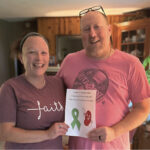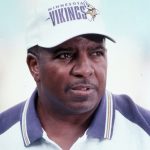 Early into the nearly 200-mile running relay, Jane Gordon was shrouded in a fog so thick that she could barely see the person in front of her, let alone the footpath below.
Early into the nearly 200-mile running relay, Jane Gordon was shrouded in a fog so thick that she could barely see the person in front of her, let alone the footpath below.
The 26-year-old Camp Hill resident was in the state of Oregon, deep in the forest, descending upon a mountain both beautiful and mysterious. Gordon had no idea what to expect, until the fog disappeared and she was left staring at a natural treasure.
“You would come out of this smoke and look to your right only to see this huge valley,” said Gordon, who was part of a 12-person team that traveled to Oregon for the Hood to Coast Relay on Aug. 23 to 24.
“I asked myself, ‘How did I get here?’ It was the best views and most amazing scenery,” she said. “It kept your mind off of the reality—that I had to run 16 miles in the next 24 hours.”
Gordon joined 11 others, most from the Harrisburg area, in Oregon for the relay, widely viewed as one of the most revered of its kind in the nation. Just 1,050 teams are admitted into the event each year, with a one-day lottery deciding the fate of teams across the country.
The 31st annual Hood to Coast Relay was a 198-mile journey that took competitors from the peak of Mount Hood to the tiny town of Seaside, a finish line that allowed runners to sink their toes into the soft sand adjacent to the Pacific Ocean.
“It’s like one of those things where, when you’re doing it, it’s terrible,” said Bryan Goldsmith, 23, of Harrisburg. “But, when you finish, the memories are some of the best.”
The Coastbusters’ team, which was led by Candace Masson, a Mechanicsburg resident, bypassed the lottery by partnering with the American Cancer Society to raise over $18,000.
The team featured Masson, co-captains Gordon and Mike Cohen, Martin Goldman, Bryan Goldsmith, Natalie Phillips, Brad Heivly, Leah Stefanski, Hannah Walsh, Jessica Keister, Amy Thornton and Caitlin Prunty.
Masson’s team raised more than $19,400 in a little over a year. As a result, the team has automatic entry into the 2014 race if they choose to do it again, she said.
For Gordon, who was a seasoned runner beforehand, the experience was something that she couldn’t predict.
“I think, going into it, we were nervous based on how daunting of a task it was,” she said. “So, we didn’t have time to anticipate everything that was going on. And even leading up to the relay, it was really exciting.”
Not just for her, but for 26-year-old Brad Heivly, an auditor in Harrisburg who hadn’t run a legitimate race before in his life.
“The race itself was constant high energy, constantly running and picking someone up and dropping them off, and it continued for 30 hours. In 30 hours, I had about 13 minutes of sleep.”
His hardest run took place midway through the event, when he was tasked with finishing a 7.5-mile leg. It was the farthest he had ever run at one time. And it was pitch black, maybe 50 degrees, he said, and was a continual uphill. But, at the top, he was met with a pretty nice view.
“By the time I was up there, it was sunrise,” he said. “I was on the crest of whatever peak we were on, surrounded by tall trees. Basically, you felt like you were deep in nature.”
Technical details may have seemed mundane, but they proved to be some of the most important aspects. To meet the demands of an exhausting race, the team stockpiled essential food like granola bars, protein bars and crackers along with Gatorade, soda and water.
And since the race took place over nightfall, runners were required to pace with headlamps and fluorescent vests to account for traffic.
Otherwise, the most important resource was the transportation. The team employed two vans, with two men and four women in each one. That meant, Heivly quipped, “The guys drove everywhere, and, as a result, the ladies were well rested.”
Sleep was hard to come by. Most legs consisted of four to seven miles, with routes taking anywhere from 40 to 75 minutes to complete.
“You’re sardines in a Dodge minivan,” said Goldsmith, who was probably the most accomplished runner on the trip, having completed another 200-mile relay from Miami to Key West previously. “The van is constantly at the next checkpoint, everyone is coming in and out, we were lost half the time, so there’s not really a moment where you can get sleep.”
Goldsmith and the others were able to fight off cramps and stiffness along the way, though.
“The big thing is the mental aspect to it,” he said. “I would say to myself, ‘Well OK, it’s 2 a.m. and you’re exhausted, but you have to do it anyway.’”
But the reality on the trip, Gordon said, is that you don’t really complain. You know you won’t get much sleep. You realize that it’s going to be hard, and it’s surely going to hurt. But that’s part of the allure.
“I think the part that made it feel real for me was, when we were having down time, we saw some of the teams that were in the ‘Hood to Coast’ movie,” said Gordon, referring to a 2010 documentary on a previous relay. “We had been training for almost a year, and I realized that I was finally here.”
He added: “It wasn’t the running part that was most rewarding, but the experience and being part of the biggest relay and knowing that we’d done so much work for the American Cancer Society.”





